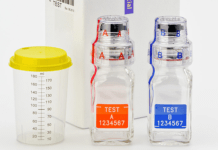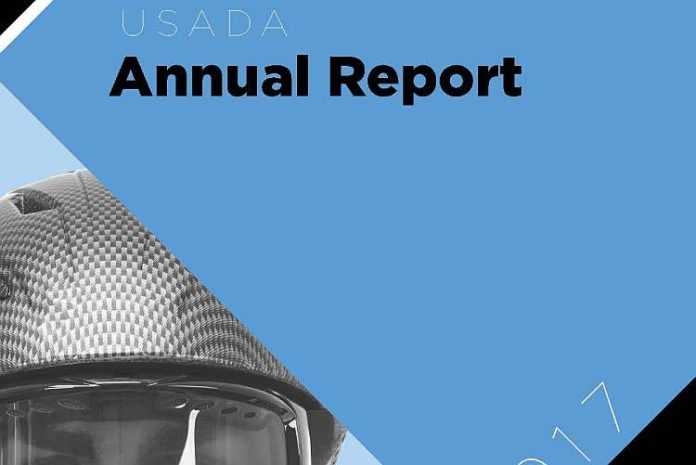The U.S. Anti-Doping Agency (USADA) published its annual report, describing its efforts in 2017 in terms of efforts, education and testing and the news was pretty good.
Out of 9,936 total tests in 2017, USADA reported only 122 potential doping violations:
- 49 resulted in a sanction;
- 35 are still pending resolution;
- 4 were referred to an international federation (meaning they concerned a non-U.S. athlete), and
- 34 resulted in no sanction being levied.
Discarding the foreign-athlete positives (4), that means that just 84 cases – 49 sanctions and 35 still to be resolved – were positive out of 9,936 tests or 8/10ths of 1 percent (0.008).
That’s pretty good.
And roughly on par with the World Anti-Doping Agency’s findings for worldwide “adverse analytical findings” of tests in Olympic and Paralympic sports of 0.82%. The WADA report (here) showed the USADA report with slightly different figures (at page 171) – 9,820 tests and 1.4% with “adverse analytical findings” that needed follow-up, and the two figures are unfortunately not matched up, but the higher problems total may be from non-Olympic sports which the USADA tested in 2017.
The USADA report also notes that it announced 70 sanctions in 2017, but the figure is not tied back to the adverse findings during the year, so we are left with the idea that in addition to the 49 sanctions noted for cases begun in 2017, there were 21 more announcements during the year that came from tests taken in 2016.
Beyond these statistical issues – and we take the numbers seriously – was some fascinating detail of the number of tests given in 2017 to specific sports. The sports tested most often:
1. 2,761 Track & Field
2. 1,329 Cycling
3. 1,049 Weightlifting
4. 808 Swimming
5. 513 Ski & Snowboard
6. 378 Triathlon
7. 335 Speedskating
8. 215 Bobsled & Skeleton
9. 162 Rugby
10. 139 Figure Skating
The report provided further details about the split between out-of-competition testing – where a USADA doping-control officer shows up at your house at 7 a.m. and asks for a sample – and in-competition tests. About 63% of the tests for all sports were out-of-competition, and about 70% of the tests for Olympic and Paralympic sports were out-of-competition.
That’s the way it should be, as athletes spend a lot more time training than they do competing, even though the testing is – at the very least – annoying and intrusive. In track & field, 2,137 of the 2,761 total tests – 77.4% – were out-of-competition. Exactly right.
USADA also did extensive testing of the probable members of the U.S. Olympic Winter Games team for PyeongChang in 2017. A total of 897 Olympic and Paralympic athletes who were considered “hopefuls” were tested a total of 1,661 times, with 82 athletes tested from 4-12 times each.
The report also noted that the agency’s education program and “TrueSport” message reached more than 10,000 athletes and support personnel in 2017, with 4,472 athletes and 1,074 coaches completing the annual anti-doping tutorial. This is good, but not enough. The time is coming when USADA should be administering a two-year test – similar in style to the written tests for driver’s licenses in many states – leading to the issuance of a USADA compliance card that would be required for entry in any sanctioned competition of a U.S. National Governing Body. The same should be done for NCAA competitions as well, taking the USADA message onto college campuses.
The financial report reveals that the biggest sponsor of USADA is the United States Government! USADA received a $9.5 million grant in 2016 and 2017 from the U.S. Office of National Drug Control Policy (ONDCP), it’s largest single source of revenue. It also received funding under contract from the United States Olympic Committee for testing and services of $5.1 million in 2017, and $6.8 million from independent testing revenues and other services. The contract with the USOC runs through 2022. USADA also handles the anti-doping and education programs for the Ultimate Fighting Championship (UFC) organization.
All told, the total revenues received by USADA last year were $21.6 million, a modest increase from $19.7 million in 2016.
Overall, this is a good report, although the number-crunchers would like some more details and to see the figures tie into the WADA report for the sake of clarity and transparency. The best assurance for the future is that the USADA chair Edwin Moses and chief executive Travis Tygart will not be deterred from promoting clean sport and finding those who cheat. Their efforts matter.
Rich Perelman
Editor
















